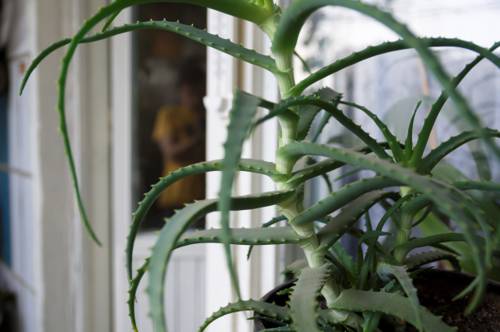
FAQ About Indoor Plant Hormonal Growth Regulation

What are plant hormones and how do they influence indoor plant growth?
Plant hormones, also known as phytohormones, are naturally occurring compounds that regulate various physiological processes in plants. They influence growth, development, and responses to stimuli. Common plant hormones include auxins, gibberellins, cytokinins, ethylene, and abscisic acid. For indoor plants, these hormones can promote growth, stimulate root development, control flowering, and enhance stress resistance, thereby playing a crucial role in maintaining healthy plant development in controlled environments.

What role do auxins play in indoor plant growth regulation?
Auxins are a class of plant hormones that are central to growth regulation. They promote cell elongation, root initiation, and differential growth by altering cell elasticity. In indoor plant care, auxins can be used to encourage root growth and facilitate plant adaptation to new conditions. They are often applied to cuttings to accelerate root formation, which is beneficial during plant propagation.

How can I use gibberellins to enhance my indoor plants' growth?
Gibberellins are another group of plant hormones that stimulate stem elongation, seed germination, and flowering. For indoor plants, gibberellins can be applied to encourage quicker seedling development and to induce flowering in non-flowering plants. However, dosage and application timings are critical to avoid excessive elongation or abnormalities.

What is the effect of cytokinins on leaf and shoot growth in indoor plants?
Cytokinins are responsible for promoting cell division and differentiation, particularly in the shoots and leaves. They help in branching, delaying leaf senescence, and increasing chlorophyll content. For indoor plants, cytokinins can be used to enhance overall greenness, promote bushier growth, and improve nutrient mobilization, thereby enhancing the plant's overall vitality and appearance.

How does ethylene affect indoor plant development?
Ethylene is a plant hormone that regulates fruit ripening, leaf abscission, and stress responses. In indoor plants, controlling ethylene levels can help in delaying leaf drop and fruit senescence. It is also involved in response to stress and can help plants acclimate to new environments or recover from damage. Managing ethylene production can be crucial to maintaining the aesthetics and health of indoor plants.

What is abscisic acid and how does it regulate indoor plant growth?
Abscisic acid (ABA) is often associated with stress responses, including drought tolerance and dormancy regulation. It helps plants conserve water by closing stomata and induces dormancy in seeds and buds. In indoor plant care, ABA can be important for managing water needs and preparing plants for environmental stress, such as low humidity or temperature fluctuations.

Can I use commercial plant growth regulators on indoor plants?
Yes, commercial plant growth regulators (PGRs) can be used on indoor plants. These products contain synthetic plant hormones or hormone analogs that mimic natural hormonal actions, facilitating processes like rooting, growth promotion, flowering, and stress management. However, it's essential to follow manufacturer guidelines for dosing and application to avoid potential side effects like overgrowth or toxicity.

What are some signs of hormonal imbalance in indoor plants?
Signs of hormonal imbalance in indoor plants can include stunted growth, excessive leaf drop, abnormal flowering, chlorosis, and uncontrolled growth or lack thereof. These may result from either natural hormonal disruptions or improper application of external plant hormones. Observing these symptoms early can help in adjusting hormonal applications or changing environmental conditions to restore balance.

How does light exposure affect the hormonal regulation of indoor plants?
Light exposure significantly impacts the hormonal regulation in plants by influencing the synthesis and activity of certain hormones. Photoperiodism, the response to the length of day or night, affects flowering and dormancy, while light quality can alter auxin distribution, affecting growth patterns. Ensuring proper lighting can enhance not only photosynthesis but also balance hormonal levels for optimal growth.

Can environmental stress affect plant hormone levels?
Yes, environmental stress such as temperature changes, water availability, and light intensity can significantly impact plant hormone levels. Stress can lead to increased production of stress-related hormones like abscisic acid and ethylene, which help plants cope with adverse conditions. Proper management of the indoor environment is essential to minimize stress and maintain hormonal balance.

How often should indoor plants be treated with growth hormones?
The frequency of applying growth hormones to indoor plants depends on the plant type, the specific hormone used, and its intended purpose. Overuse can lead to hormonal imbalance and impair rather than enhance growth. Generally, treatments such as rooting hormones for propagation are applied once during planting, whereas foliar sprays may be used sparingly during active growth periods as directed by product guidelines.

What safety precautions should be taken when applying plant hormones indoors?
When applying plant hormones indoors, always follow the manufacturer's instructions. Wear gloves to prevent skin contact with concentrated solutions and ensure good ventilation in the area to avoid inhalation of any volatile compounds. Keep products out of reach of children and pets, and store them in a cool, dry place to maintain their efficacy and safety.

Are there natural alternatives to synthetic plant growth regulators for indoor plants?
Yes, natural alternatives to synthetic plant growth regulators include organic compounds like seaweed extracts, compost teas, and biostimulants derived from plant or microbial sources. These natural products can enhance plant growth by providing beneficial microorganisms, nutrients, and organic matter that support plant health and growth, while also promoting a balanced interaction of natural plant hormones.

What is the role of jasmonates in indoor plant care?
Jasmonates are a class of plant hormones involved in regulating stress responses, wound healing, and defense against pests and pathogens. In indoor plant care, they can help enhance resistance to biotic stresses and promote recovery from mechanical damage. Although not commonly used as a treatment, understanding their role can help in integrating preventive care strategies for healthier plants.

Can overuse of plant hormones lead to negative effects on indoor plants?
Yes, overuse or improper application of plant hormones can lead to negative effects such as abnormal growth patterns, leaf discoloration, and even plant death. Hormones must be applied judiciously and in accordance with specified guidelines to avoid disrupting the natural growth processes. Observing plant responses and adjusting treatments as needed can help prevent these adverse outcomes.

How do plant hormones interact with nutrients in indoor gardening?
Plant hormones interact closely with nutrients by modulating nutrient uptake, transport, and assimilation. For instance, cytokinins can enhance nutrient mobilization, while auxins influence root architecture and nutrient absorption. Managing both hormonal treatments and nutrient supply effectively ensures that indoor plants utilize resources efficiently, leading to better growth and health.

Is it possible to regulate indoor plant size with hormones?
Yes, plant size can be regulated using hormones such as gibberellins to promote growth or abscisic acid to limit excessive growth. Hormones can be used to achieve desired plant sizes for aesthetic or functional purposes, but care must be taken to apply them correctly to avoid overstimulation or unintended growth restrictions.

What is the relationship between root hormones and indoor plant propagation?
Root hormones, usually containing auxins, are commonly used in indoor plant propagation to enhance root development in cuttings. They help initiate root growth faster and improve the success rates of plant cuttings establishing in soil. Using rooting hormones can accelerate the propagation process and enhance the survival and growth of new plants.

How can I detect hormonal issues in my indoor plants early?
Early detection of hormonal issues in indoor plants requires careful observation of growth patterns, leaf color, flowering, and overall vigor. Unusual growth, wilting, excessive leaf drop, or lack of flowering may indicate hormonal imbalances. Regular monitoring and recording of plant behaviors can help in spotting potential issues early and adjusting care or treatments accordingly.

Can indoor plant hormones impact human health or air quality?
Plant hormones themselves generally do not impact human health or air quality when used appropriately. However, synthetic hormone products may contain additional chemicals that require safe handling and application. Always ensure that treatments are applied according to safety instructions to minimize any potential risks.
